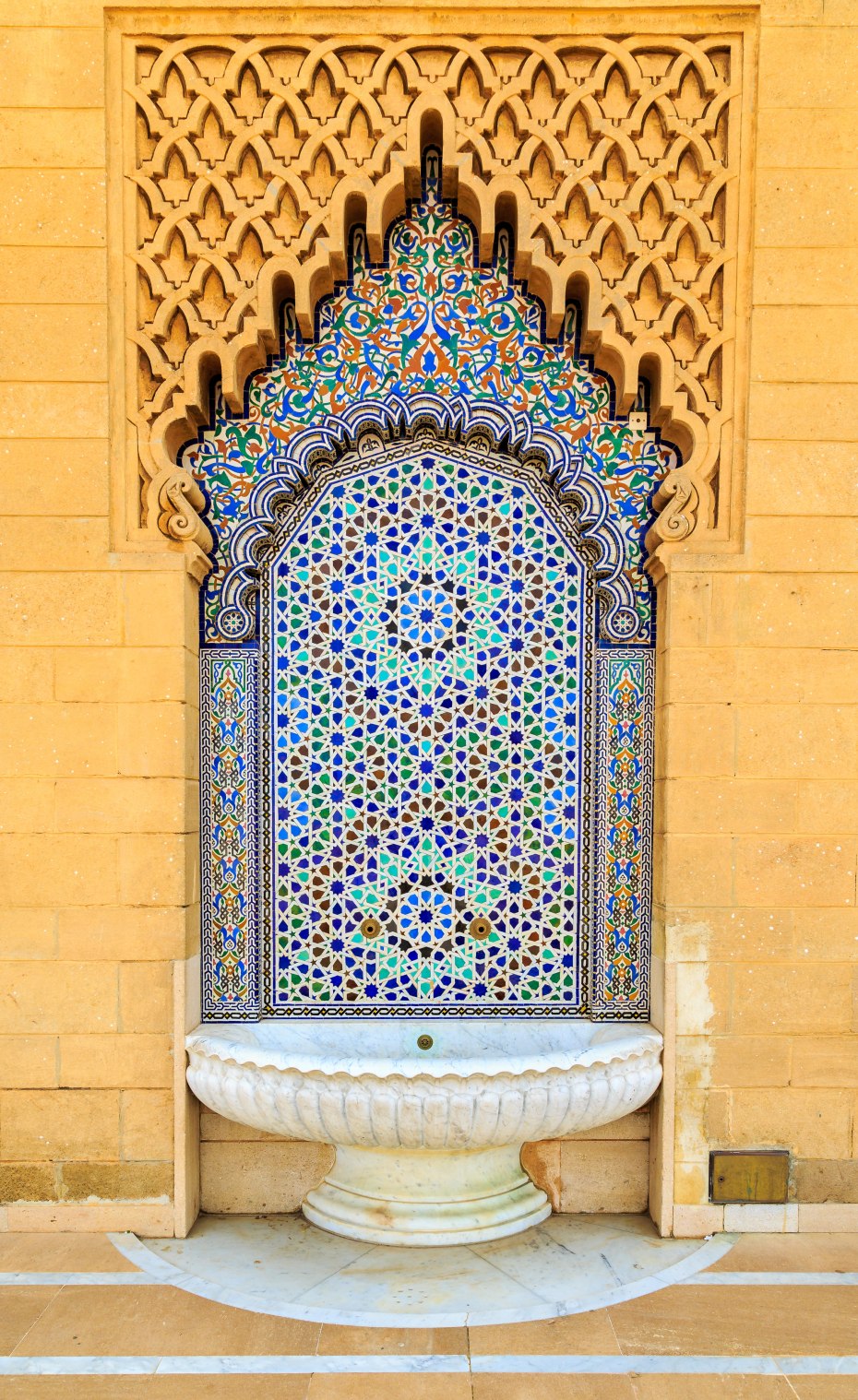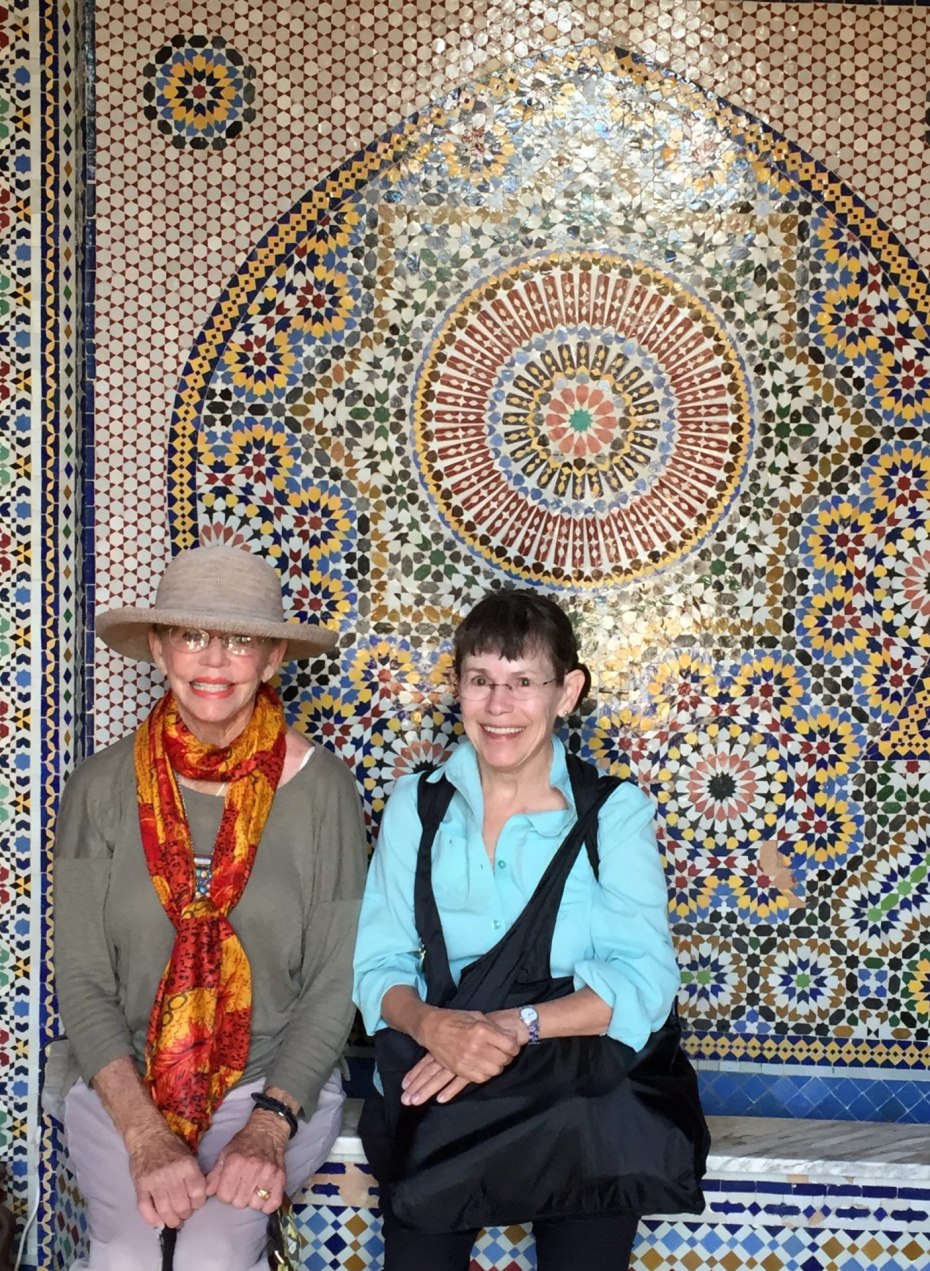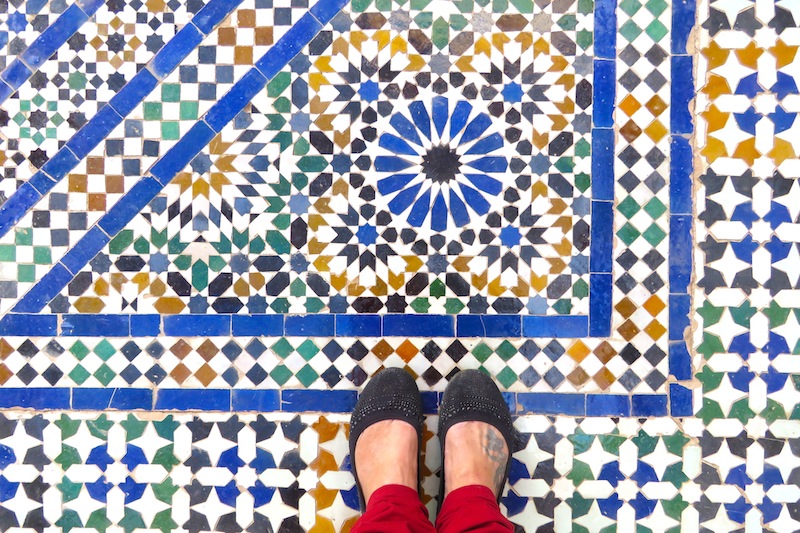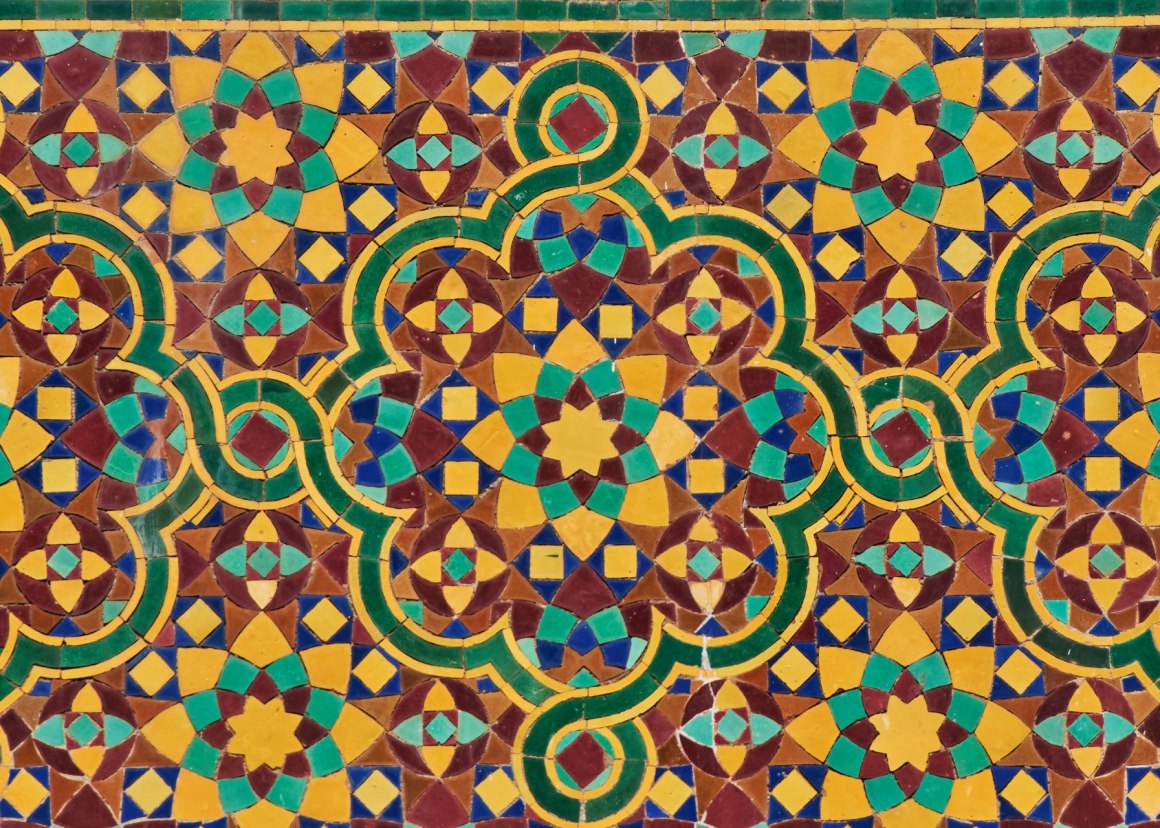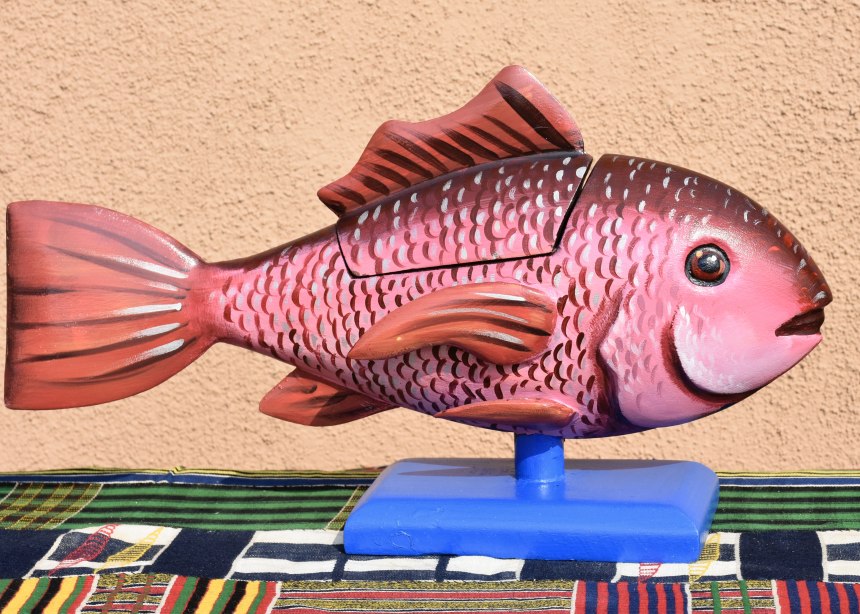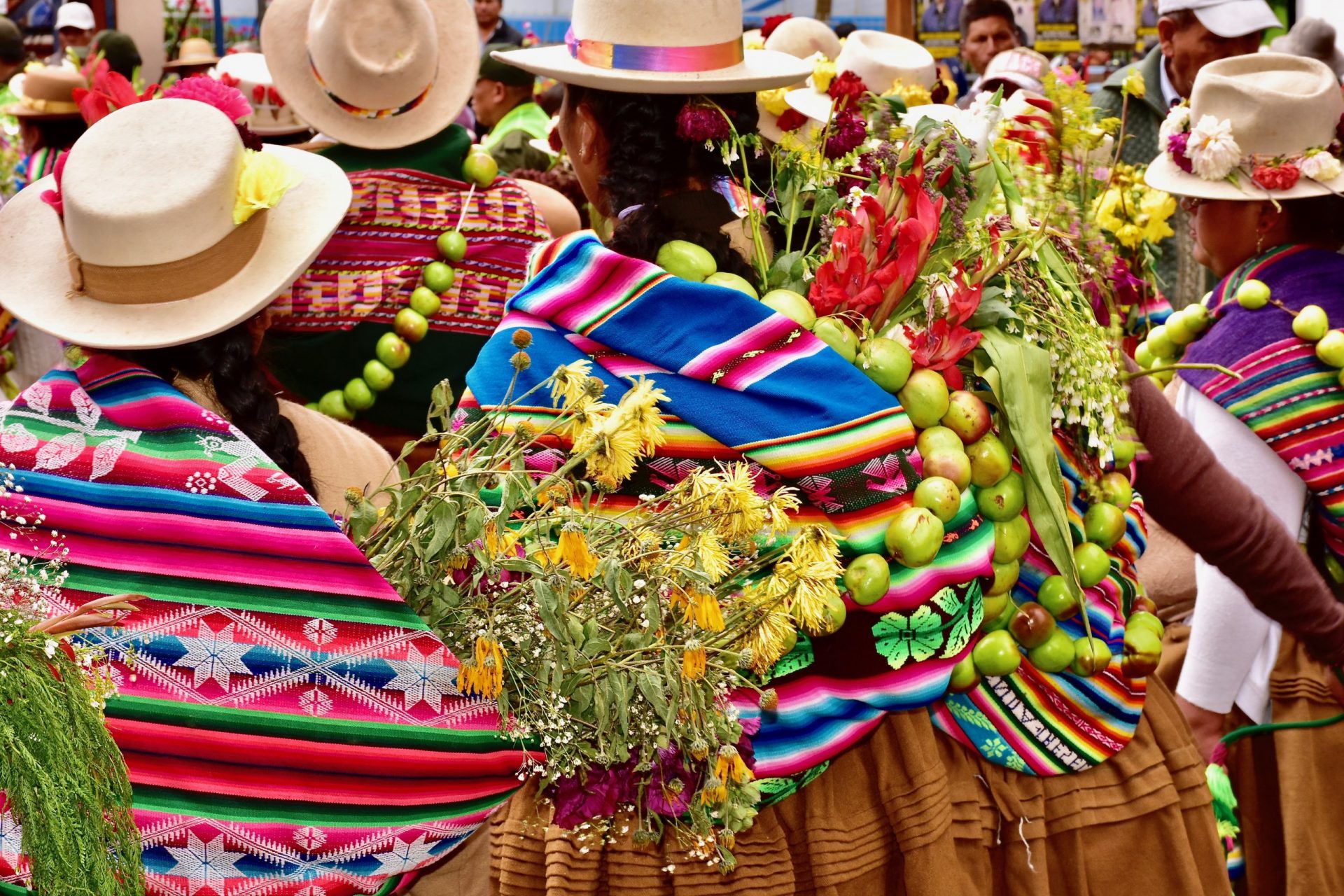The superb craftsmen behind the ancient Moroccan mosaic art of ZELLIJ are known as maallems (or Zellij artisans). They are expert masons, able to employ their painstakingly learnt wisdom and skill to design and create stunning tile work.
First the basic handmade tiles are made from local clay. The clay is mixed, then spread out to the proper thickness, and cut into squares or rectangles. For mosaics, most tiles start out as squares about 4” by 4.”
The worker lets the clay squares dry in the sun, then carefully loads them into a kiln, either wood- or gas-fired, for the first or bisque firing. When fired and cooled, the front surface only is carefully dipped into a glaze, one batch for each color of glaze – depending on what is needed for the project at hand. Blue tiles are traditional, as are green, black, yellow and white. Brown and pink are used occasionally also.
Once dipped into glaze, the pieces are re-loaded into the kiln but this time stacked on edge like a house of cards, so they don’t stick together when the glaze melts and flows in the heat. After this second firing and cooling, the squares are stacked, ready for the maallem to trim them into smaller geometric shapes. A tool known as a menqach is used to do this job; it resembles a big, two-sided hammer, but both ends have a sharp edge.
Using a sample shape, the maallem scribes around the edges with a nail or pencil from the gritty, unglazed back side. Then comes the hard part! He carefully hammers and chips the tile along the lines, and with a dozen or so hits, ends up with the perfect form, matching the sample piece. He then sets the piece upside down on the paper pattern on the ground nearby. Occasionally the edges might need a bit of sanding, but an experienced maallem produces precise, neat shapes that don’t need further re-working.
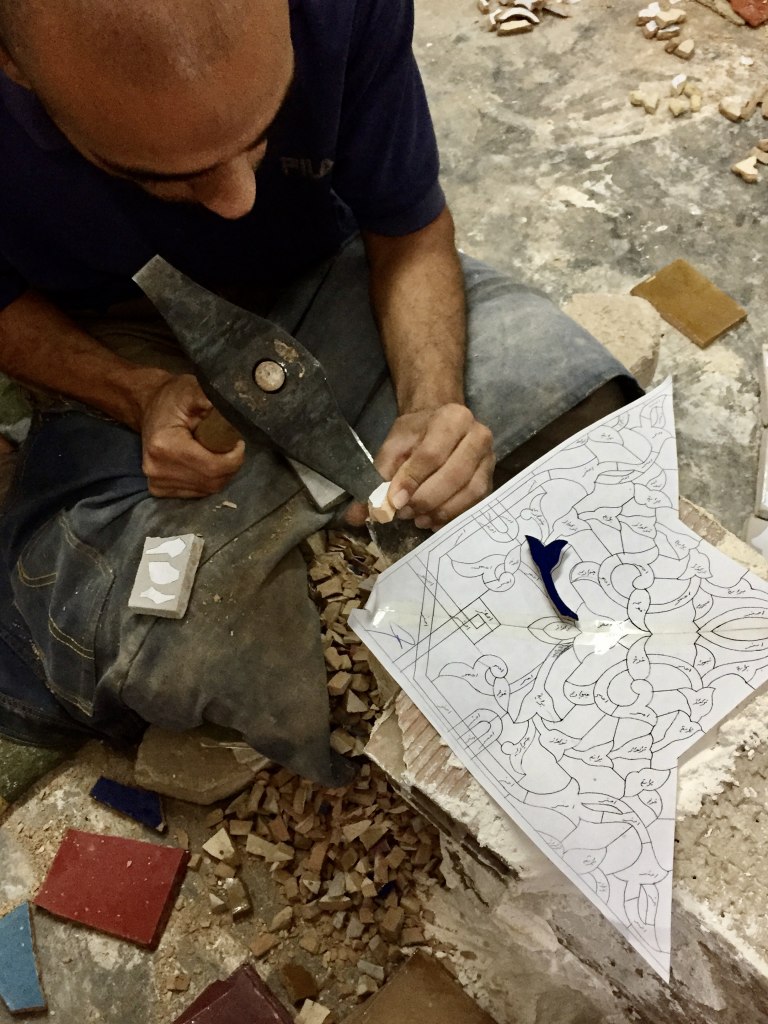
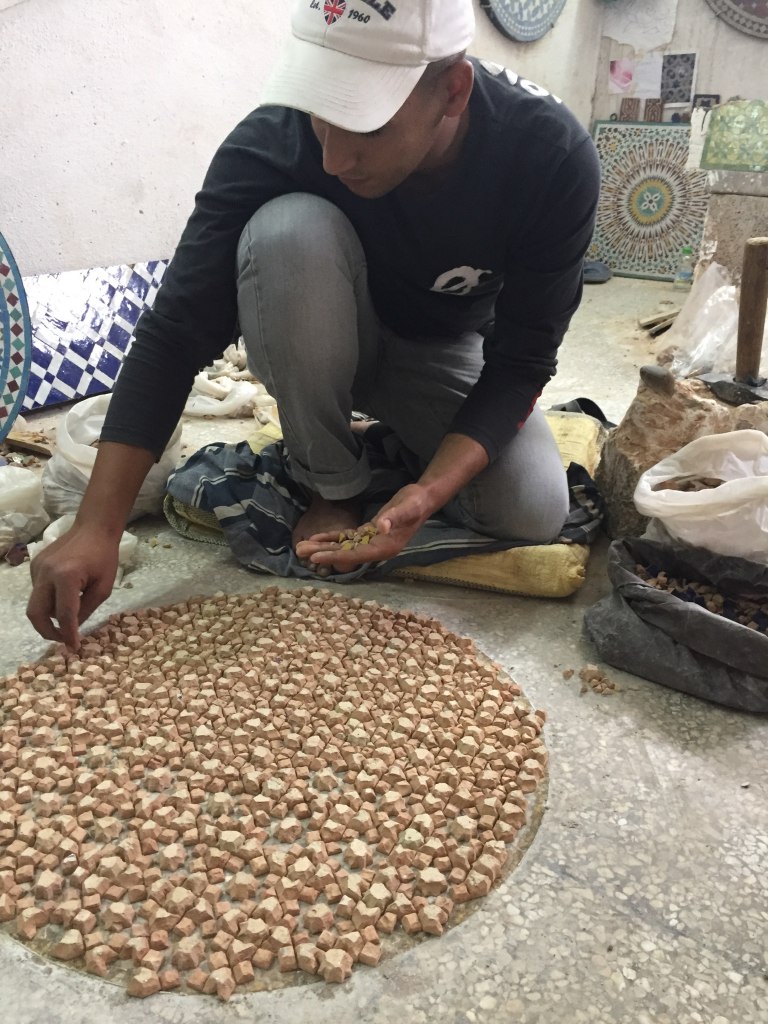
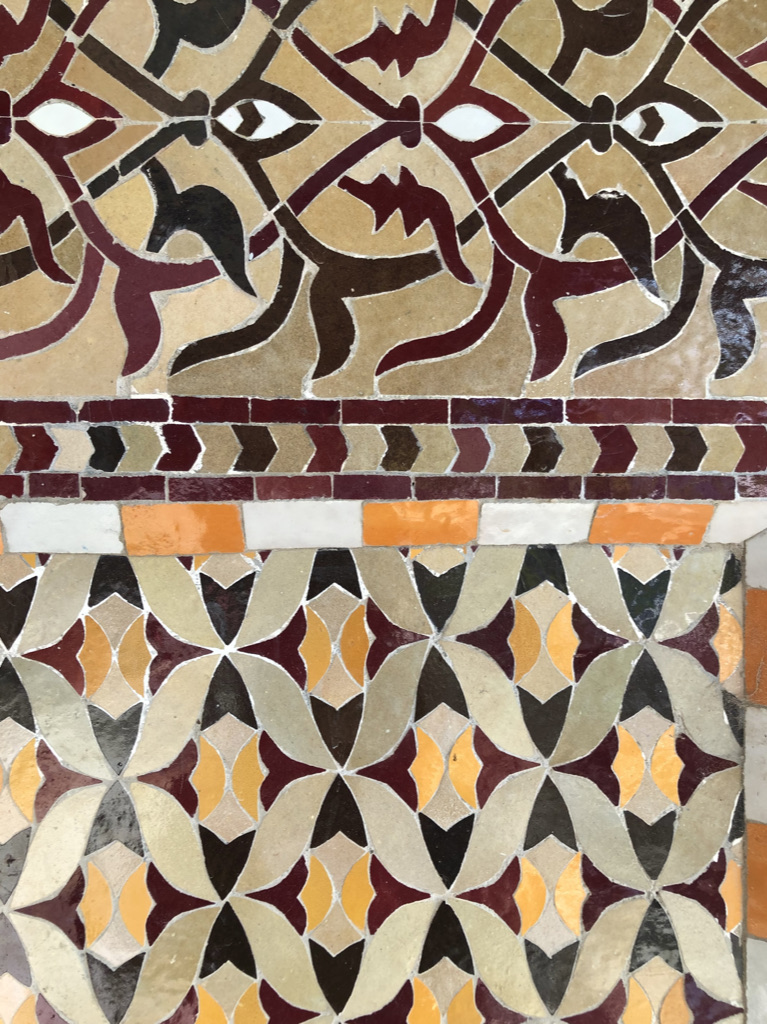
A maallem will spend years perfecting his craft and he takes pride in each piece produced. It is traditional for maallems to begin training when they are young and often the craft is passed down from generation to generation with a father passing on the secrets and skills of this unique craft to his son.
– From Zellij-Prince of Tiles History from Zellij Gallery, Fes, Morocco.
Once all the pieces are trimmed and placed on the paper pattern on the ground, the maallem places a metal frame around the work, still on the ground. Then a slurry mixture of cement and other binders is poured on top, just level with the surface. The worker pushes and squishes it meticulously into the interstices, wipes the surface (actually the back, since the front is still against the ground) and lets it dry until it is as hard as stone. Later the whole piece is lifted upright and the colorful front is revealed. They polish the surface with water and rags, and send the piece off to enhance its destination, which could be a fountain, table top or floor section.
